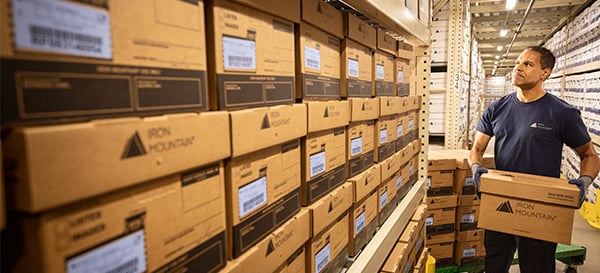Elevate the power of your work
Boka en GRATIS konsultation idag!
In the three years since COVID-19 burst on the scene, supply chain professionals around the world have had a lot of changes to digest. With some semblance of normalcy now in view, it’s worth checking in on the state of the supply chain and how well it’s adapting to the new normal. Here are five trends to watch.

In the three years since COVID-19 burst on the scene, supply chain professionals around the world have had a lot of changes to digest. With some semblance of normalcy now in view, it’s worth checking in on the state of the supply chain and how well it’s adapting to the new normal.
Here are five trends to watch:
The good news is that supply chains are recovering. Freight rates on major global routes have fallen sharply over the past six months as demand for goods made in China has eased along with the backlog of vessels waiting at ports. Rates for bulk commodities have slid by up to 80%. Manufacturers have also made progress in seeking out alternative sources and bringing some functions that were previously outsourced back in-house. Two-thirds of CEOs say they are “reshoring”—or reeling overseas operations back closer to home—and another 25% plan to do so this year.
Nevertheless, fragility continues. There were 46% more supply chain disruptions in the first half of 2022 compared to a year earlier, according to Resilinc. Events like the war in Ukraine and heightened trade tensions between the United States and China threaten to throw a wrench into the works. Extreme weather events and even data centre outages are also wildcards.
Inflation showed signs of easing in December 2022, but it’s too early to tell if the winddown is a long-term trend or a blip. The big question mark is consumer spending, which accounts for more than two-thirds of GDP. There are signs that consumers are pulling back on the buying binges that characterised the first year of COVID-19-related lockdowns and are now instead ploughing their money into travel and experiences. For example, furniture orders in May 2022 fell more than 40% compared to a year earlier. And three-quarters of consumers polled by Deloitte in November 2022 said they’re concerned about rising prices for everyday things, although that figure was down from 84% six months earlier.
JPMorgan Chase CEO Jamie Dimon recently warned that worries about inflation may prompt consumers to spend down their savings and leave them less prepared to weather a prolonged recession. Echoing many economists, Costar recently predicted that the US economy will fall into recession this year driven by a combination of interest rate increases, global economic weakness, and record-low consumer confidence. The National Association of Manufacturers reported that 62% of manufacturing leaders believe the US economy will slip into a recession in 2023. The good news is that most pundits now believe the downturn will be mild.
There’s no sign the Federal Reserve will reverse its campaign to continue raising interest rates until inflation is solidly under control. “Cheap money,” wrote SAP Digital Supply Chain Executive David Vallejo, is “a thing of the past.” The risk is that if credit becomes too tight it can trigger a downturn.
For the past 30 years, manufacturers and retailers have pursued the Holy Grail of “just in time” inventory management. In a post-COVID world that mindset has switched to “just in case,” in the words of Costar analyst Juan Arias. Fearful of future supply chain disruptions, retailers have been stockpiling inventory; Walmart said it was sitting on nearly $60 billion worth of warehoused goods at the end of the second quarter, up 25% from a year earlier
Although retail inventories remain below historic averages, manufacturers have been bulking up. In July 2022, the Institute for Supply Management’s Inventories Index hit its highest level in 38 years. High inventories are a good news/bad news scenario. Shoppers benefited from post-holiday sales in January 2023 as retailers scrambled to clear out warehouse space. However, high inventory levels cost money to maintain. That weighs on corporate profits and can throttle supplies to some geographic regions or smaller sellers.
People want to be more prepared than they were in 2020, so we can expect that inventory management will continue to be guided more by caution than efficiency for the foreseeable future.
All that inventory takes up space and that has added up to some of the worst warehouse shortages the US has ever seen. Prologis reported that vacancy rates have fallen to an all-time low of just over 3% and run as little as 1% near ports. The firm estimated that an incremental 800 million square feet of logistics space will be needed to ease the current shortage
A combination of factors is at work here. One is retailer stockpiling as noted above. Cargo has also been flooding into US ports as supply chain constraints have eased. Dockworkers at the Los Angeles/Long Beach seaport handled 550,000 more 40-foot containers in the first six months of 2022 than they did the year before the pandemic hit. Building material shortages that materialised during lockdowns have hindered the ability of builders to keep up with the demand for new warehouse space. It will likely take years for them to catch up.
Uncertainty breeds ingenuity, and the combination of unforeseen disruptions and space shortages has forced retailers to get creative about inventory management. Some have reallocated space in their stores or even used shuttered shopping malls for temporary storage.
This experience will prompt buyers and sellers alike to invent new ways to cope with uncertainty. Inflexible logistics networks and multi-year contracts will become less common as supply chain partners seek logistics providers that can provide flexible storage and fulfilment programmes on demand. In the end, everyone will be better prepared for the next disruption.
Navigate today’s dynamic supply chain environment and build a more agile logistics network by partnering with Iron Mountain Warehousing and Logistics. Whether you’re looking to supplement your existing operations or build out a brand new distribution network, we can help ensure you’re fully prepared for future growth and disruptions.
Boka en GRATIS konsultation idag!

